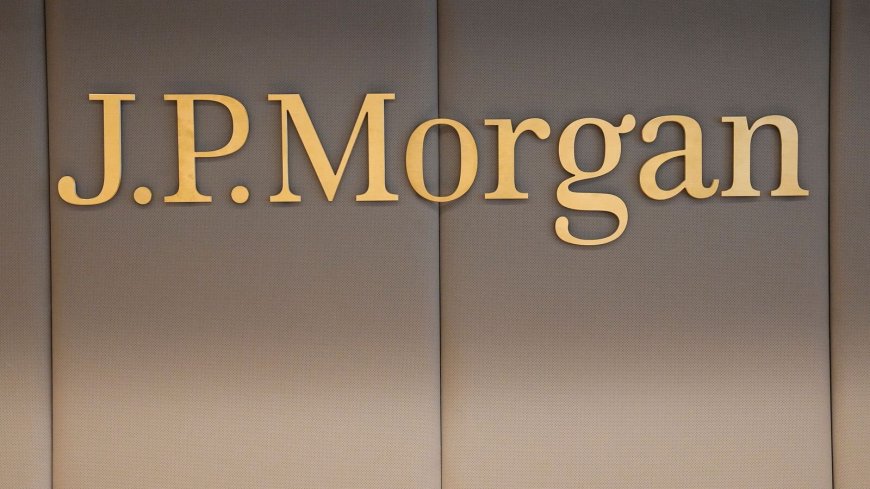JPMorgan mulls cutting China, India share in EM Bond index
JPMorgan is considering reducing China and India's weight in its Emerging Market Bond Index, citing investor concerns. Learn the potential impact on bond flows and markets.

In a move that could reshape capital flows across emerging markets, JPMorgan Chase & Co. is reportedly considering a reduction in the weightage of China and India in its Emerging Market (EM) Bond Index, a widely tracked benchmark by global investors. The potential rebalancing has stirred discussions across the financial ecosystem, with analysts cautioning about the impact on sovereign bond demand, currency flows, and geopolitical alignment in global investment portfolios.
Why JPMorgan Is Rethinking Index Composition
According to people familiar with the matter, JPMorgan is weighing whether to lower the relative weights of China and India in its Government Bond Index-Emerging Markets (GBI-EM) following concerns from international investors over market accessibility, capital controls, and rising political and geopolitical risks.
Currently, China and India represent a significant share of the index, thanks to their large economies and growing integration into the global financial system. However, recent investor feedback suggests increasing discomfort with the ease of repatriating funds, tax treatment, and regulatory clarity in these jurisdictions.
"Investors are increasingly pushing for transparent, accessible, and liquid bond markets. When these conditions are not met consistently, it compels index providers to reconsider allocations," said Laura Fitzsimmons, Head of Global Fixed Income Strategy at Citi.
Current Composition of the GBI-EM Index
As of the last rebalance, India holds around 10% of the GBI-EM index, while China holds nearly 8%, making them two of the largest country allocations. The index, used by funds managing over $240 billion, includes bonds from a mix of Latin American, Asian, and Eastern European economies such as Brazil, South Africa, Mexico, Thailand, and Indonesia.
If JPMorgan proceeds with a revision, the weights of countries like Brazil, Mexico, Poland, and South Africa could increase, potentially redirecting billions in portfolio investments away from India and China.
India's GSec Market at Risk?
India's inclusion in the GBI-EM index last year was considered a milestone, driven by the Indian government’s opening up of the Fully Accessible Route (FAR) for foreign investors. This allowed easier access to a pool of government securities without investment caps.
However, analysts now suggest that delays in clearer taxation norms, coupled with geopolitical friction and persistent currency volatility, may be dampening foreign sentiment.
"The Indian bond market remains fundamentally attractive, but operational and regulatory frictions still deter many long-only investors," said Ananth Narayan, a former investment banker and current SEBI board member. "A downgrade in index allocation could temporarily disrupt flows but may serve as a wake-up call to further liberalise and simplify participation."
China's Rebalancing Risk
China’s debt market—one of the largest in the world—has also faced scrutiny over the lack of full capital account convertibility, opaque risk metrics, and uncertainty around economic data transparency.
"Despite the sheer size of the Chinese bond market, it remains inaccessible for many global players due to restrictions on fund repatriation and sudden regulatory shifts," noted Richard McGuire, Fixed Income Strategist at Rabobank.
Investors are also spooked by geopolitical tensions between China and the West, leading to a broader reevaluation of China’s weight in global portfolios.
Broader Market Implications
If the reallocation goes through, outflows from Indian and Chinese debt markets could mount, impacting domestic bond yields and currency stability. However, the actual scale of impact will depend on how JPMorgan implements the changes—whether gradually or via a one-time adjustment.
“Even a 1–2% reallocation could lead to billions in inflows or outflows, depending on the direction,” said Neeraj Seth, Head of Asian Credit at BlackRock. “These indices are not just symbolic; they materially move capital.”
India’s 10-year benchmark bond yield hovered near 7.03% on Thursday, while the rupee traded around 83.50 per USD—both relatively stable, though dealers reported mild caution among foreign participants.
How Investors Should Respond
Institutional investors tracking JPMorgan’s EM Bond Index are advised to closely monitor forthcoming announcements and prepare for potential reallocations over the next quarter.
Short-term investors may look for arbitrage or hedging opportunities across currencies and local debt, while long-term holders should assess sovereign fundamentals beyond index weightings.
"Market fundamentals in India remain strong—debt-to-GDP is manageable, inflation is under control, and fiscal deficit is narrowing," commented Mahesh Patil, CIO of Fixed Income at Aditya Birla Sun Life AMC. "Any temporary outflows should not deter investors from the long-term India story."
JPMorgan’s reconsideration should be viewed not as a downgrade but rather as a reflection of evolving investor priorities. With increased demand for transparency, liquidity, and rule-based governance in EM investing, the pressure is now on India and China to accelerate reforms that make their markets more investor-friendly.
The final decision is expected in the coming months, potentially around the next index rebalancing cycle in Q4 2025.
What's Your Reaction?
 Like
0
Like
0
 Dislike
0
Dislike
0
 Love
0
Love
0
 Funny
0
Funny
0
 Angry
0
Angry
0
 Sad
0
Sad
0
 Wow
0
Wow
0













































































